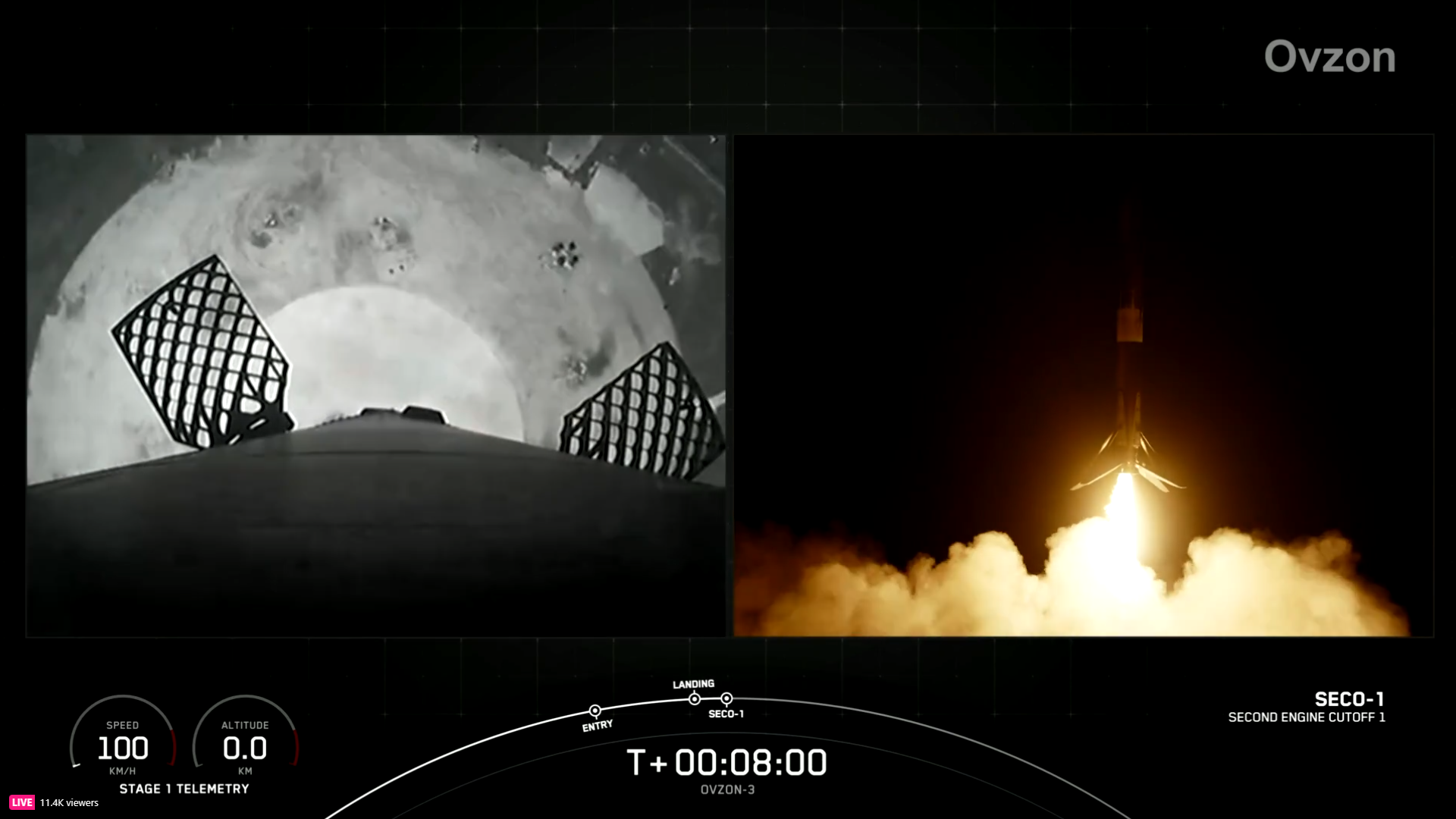
A ten-times-used Falcon 9 booster rose from Florida on Wednesday evening and returned, eight minutes later, to alight back on solid ground, wrapping up SpaceX’s second mission in the opening week of the new year. Veteran B1076—which became the 12th “single-stick” Falcon 9 to complete a tenth launch—took flight from storied Space Launch Complex (SLC)-40 at Cape Canaveral Space Force Station, Fla., at 6:04 p.m. EST, laden with a powerful geostationary telecommunications satellite for the Stockholm, Sweden-headquartered broadband firm, Ovzon.
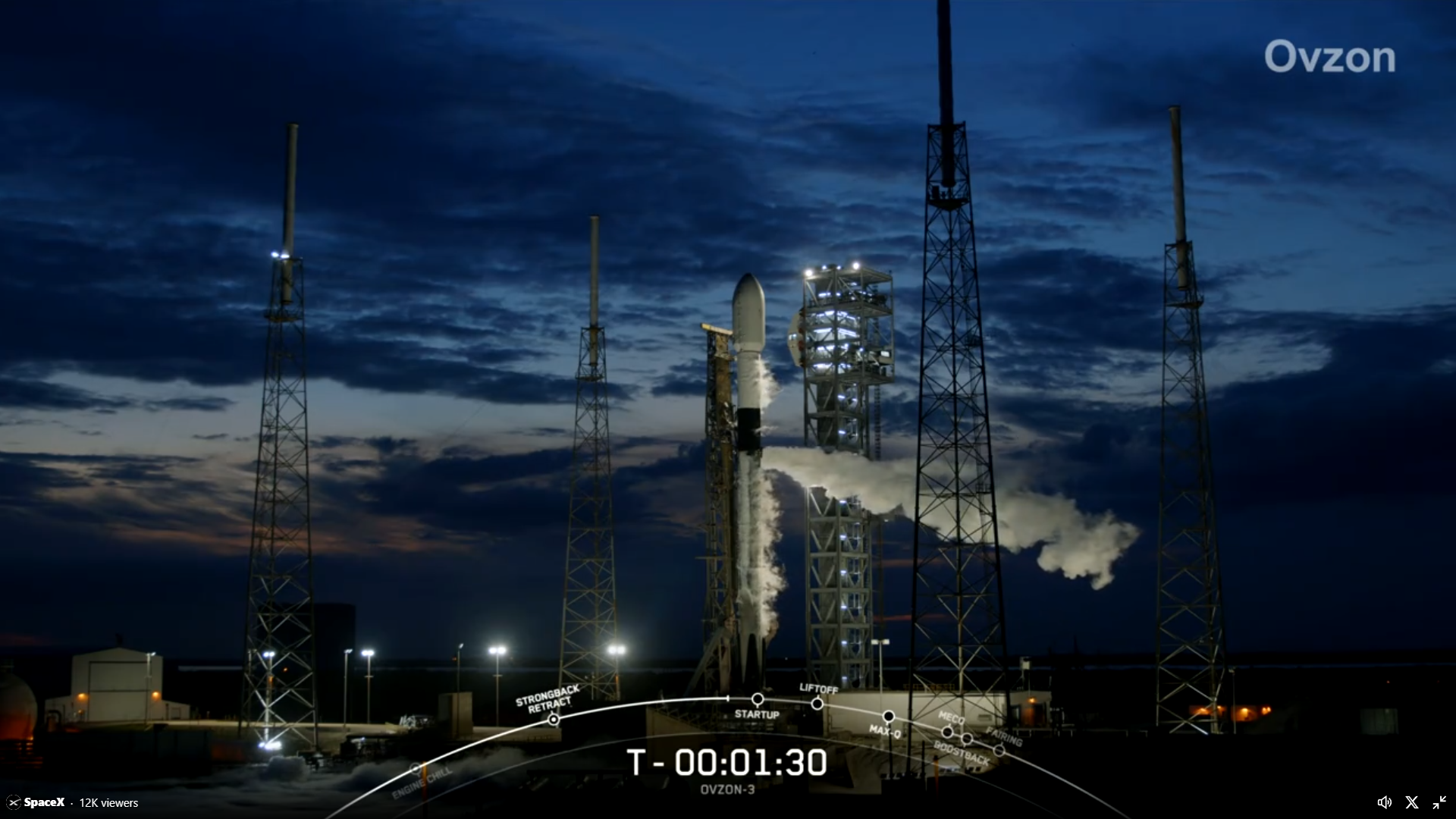
Weather conditions proved around 90-percent-favorable for tonight’s launch, tempered only by a marginal risk of violating the Thick Cloud Layer Rule. “To the west, the next system to watch is taking shape across the western Gulf as an upper-level shortwave and robust southern stream jet dig across the South Central U.S.,” noted the 45th Weather Squadron at Patrick Space Force Base in its L-1 update on Tuesday.
“The resulting fast-moving Gulf Low will push towards the state late Wednesday night with continuing good model agreement that the primary launch window will be long before any associated significant weather concerns,” it added. “The main weather concern remains the Thick Cloud Layers Rule as mid and high clouds increase ahead of the low.”
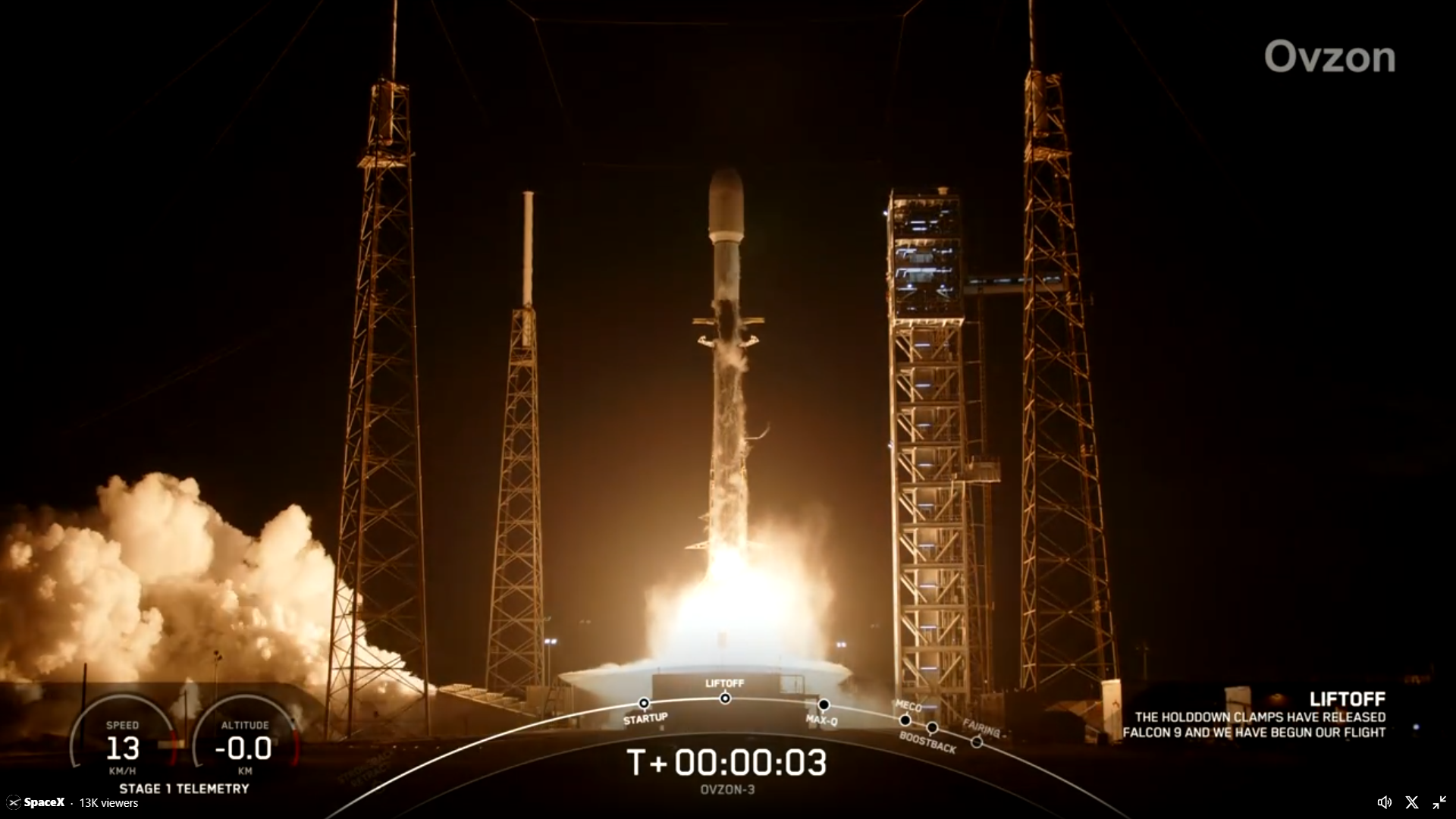
No Autonomous Spaceport Drone Ship (ASDS) support was required for the mission, whose return instead targeted a solid-ground touchdown on Landing Zone (LZ)-1 at the Cape. It marked the first occasion that a core stage devoted to launching a payload into Geosynchronous Transfer Orbit (GTO) had landed on solid ground, all previous GTO-bound missions by single-stick Falcon 9s terminated with drone-ship landings.
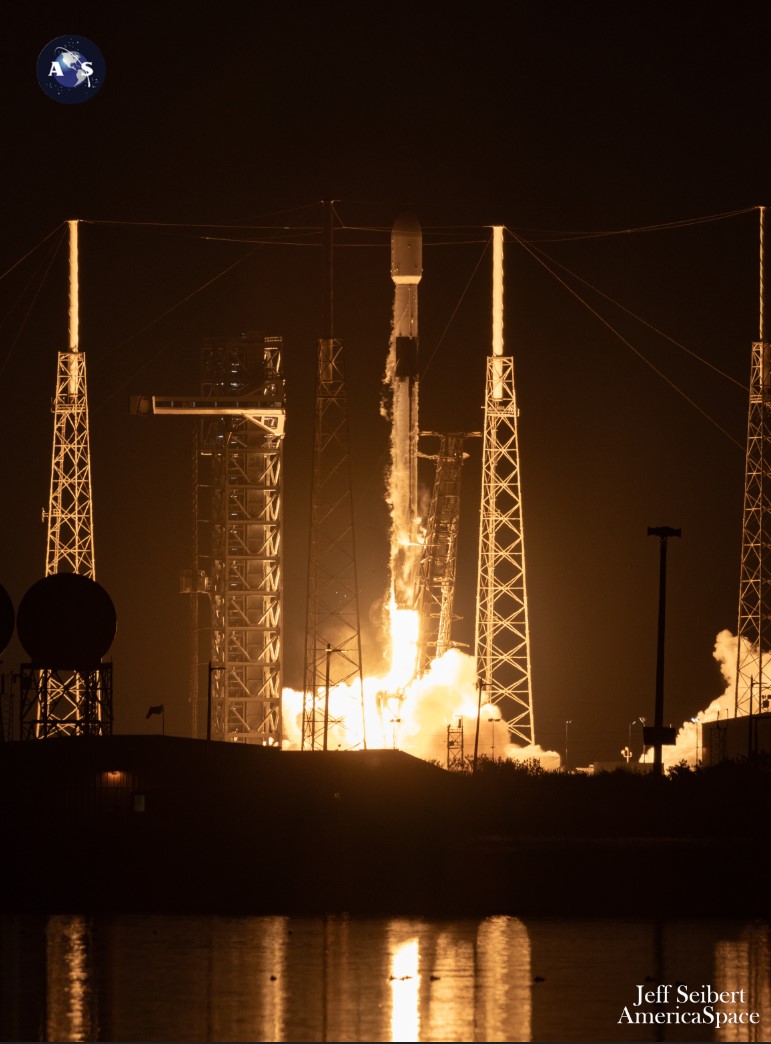
That payload is Sweden’s Ovzon-3, a 3,968-pound (1,800-kilogram) High Throughput (HTP) broadband communications satellite, targeting an eventual operational geosynchronous altitude of 22,300 miles (35,900 kilometers). This mission was originally contracted to SpaceX back in October 2018 as a Falcon Heavy payload, inserted directly into Geosynchronous Earth Orbit (GEO), but later transitioned firstly to Arianespace’s Ariane 5 and later back to SpaceX and a single-stick Falcon 9.
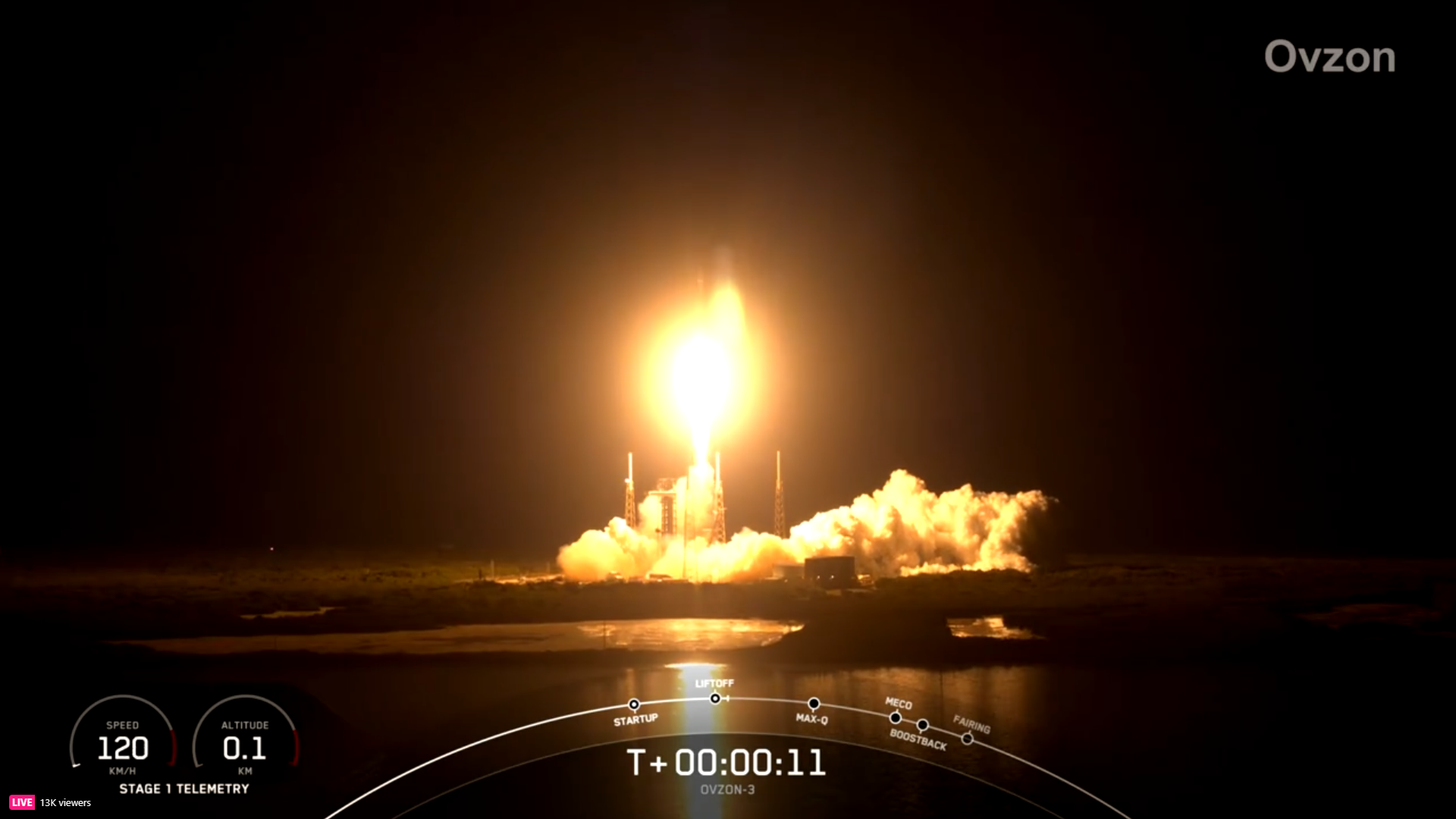
In December 2018, it was revealed that Maxar would build the “mid-sized” Ovzon-3 on the bones of its tried-and-proven Legion-class satellite “bus” (previously known as SSL-500) and slated for launch in the fourth quarter of 2020, “conditional,” it cautioned, “on Ovzon raising financing”. By the following July, that financing commitment was in place—via a loan facility led by Proventus Capital Partners with a loan of $60 million and a subordinated loan of 200 million Swedish Krona ($19.6 million)—and fabrication of Ovzon-3 got underway in Maxar’s Palo Alto, Calif., facilities in July 2019, by which time launch had slipped until no sooner than the fourth quarter of 2021.
In the meantime, contracts for usage of the new satellite emerged in the form of the Italian Ministry of Defence for “on-the-move” and “on-the-pause” data applications, together with scalable 24/7/365 “SATCOM-as-a-Service” orders from a wide range of customers, including the Swedish Space Corporation (SSC), the Government of Colombia, Italy’s fire and rescue services and border police and the UK Government. Ovzon-3’s five independent, steerable spot-beams will “dynamically deliver capacity to the right place at the right time” and its powerful on-board processor “directly connects deployed terminals across multiple beams when teleports are degraded, destroyed or otherwise unavailable” and facilitates frequency-hopping to counteract jamming and usage in environments without GPS coverage.
But delays in Ovzon-3’s construction, a shortage of key satellite components and the worldwide march of the COVID-19 coronavirus pandemic pushed the launch progressively further to the right, firstly to December 2022-February 2023 and eventually into the middle of last month. Originally targeted to fly on 15 December, unfavorable weather in Florida moved the launch back to the 22nd and eventually into the New Year.
“The things we can control are well under control,” said Per Norén, CEO of Ovzon. “We have a healthy spacecraft ready for launch as soon as the weather clears and we are working closely with SpaceX to do that safely and as quickly as possible. Weather is a key factor in every launch, so now is the time for patience.”
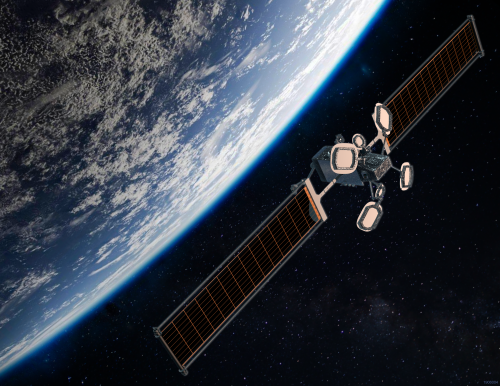
That patience was rewarded on Tuesday, when SpaceX formally announced that Ovzon-3 was aiming for a ten-minute “launch window”, opening at 6:04 p.m. EST Wednesday, with a more expansive 87-minute backup opportunity starting at 4:47 p.m. EST Thursday. Deployment of the satellite into its optimum GTO slot would require a pair of “burns” by the single Merlin 1D+ engine of the Falcon 9’s second stage.
Liftoff of B1076 occurred on time, right on the opening of the window, barely 19 hours after SpaceX kicked off 2024 with a rousing, late-evening Starlink launch (including the first six “Direct-to-Cell” satellites) from Vandenberg Space Force Base, Calif. The veteran booster powered smoothly uphill for the opening 2.5 minutes of ascent, before separating from the stack and descending to a smooth touchdown on LZ-1, marking the second “land” landing of her ten-flight career so far.
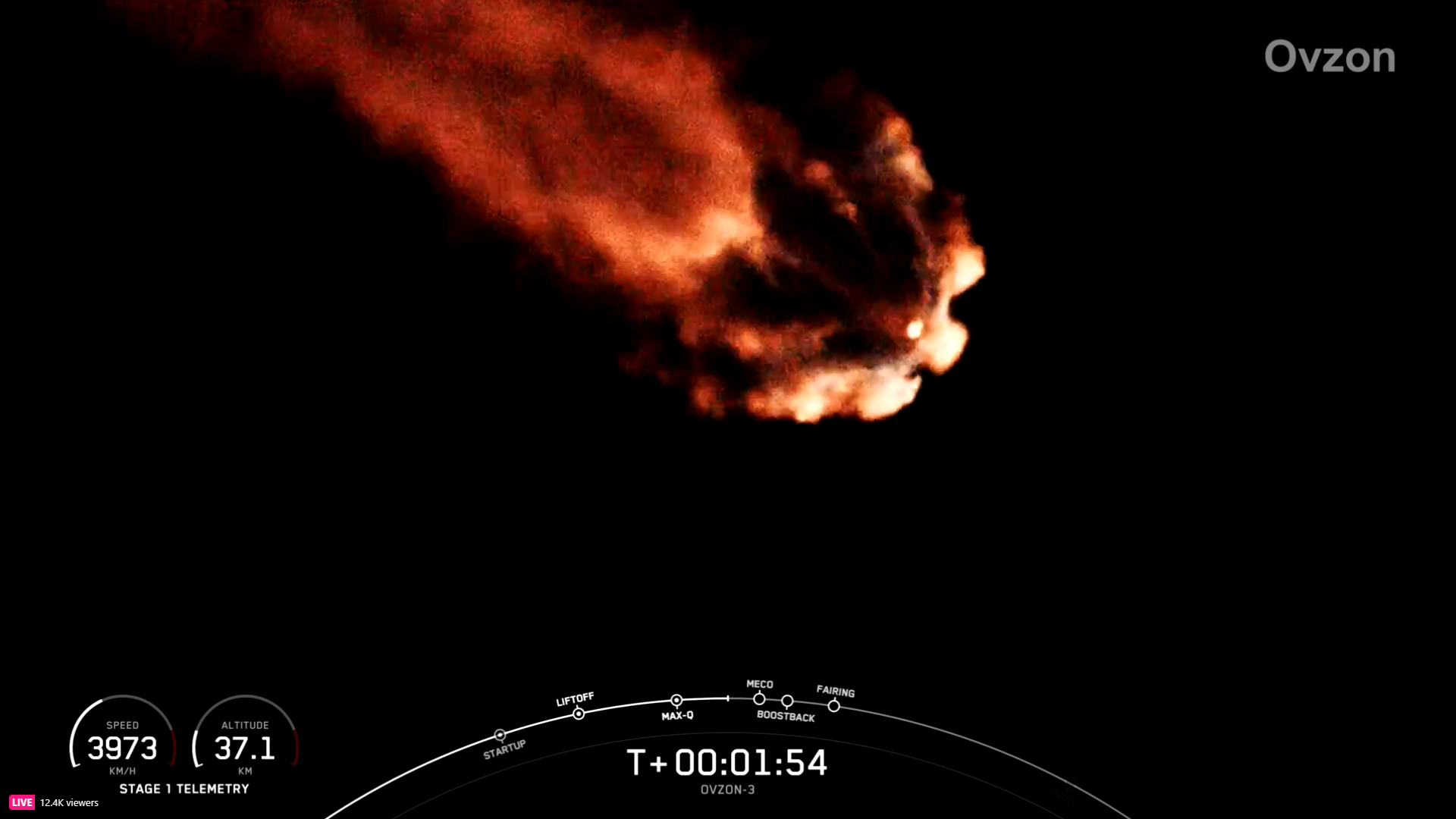
It added a new footnote to an impressively burgeoning career which began in November 2022, when she lofted the CRS-26 Cargo Dragon for a six-week berth at the International Space Station (ISS). B1076 went on to fly eight times last year, heaving 40 broadband satellites uphill for London, England’s OneWeb in the second week of January, followed by the heavyweight Intelsat 40e geostationary communications satellite—co-manifested with NASA’s Tropospheric Emissions: Monitoring of Pollution (TEMPO) payload—in early April, five batches of Starlinks in February, May, July, September and October and a pair of O3b mPOWER communications satellites in November.
This impressive tempo of flights saw B1076 execute eight ASDS landings and, inclusive of tonight’s Ovzon-3 mission, two on-point touchdowns on solid ground at the Cape. In February of last year, she wrapped up the hundredth consecutive successful landing of a booster stage since SpaceX’s last landing failure almost three years ago.
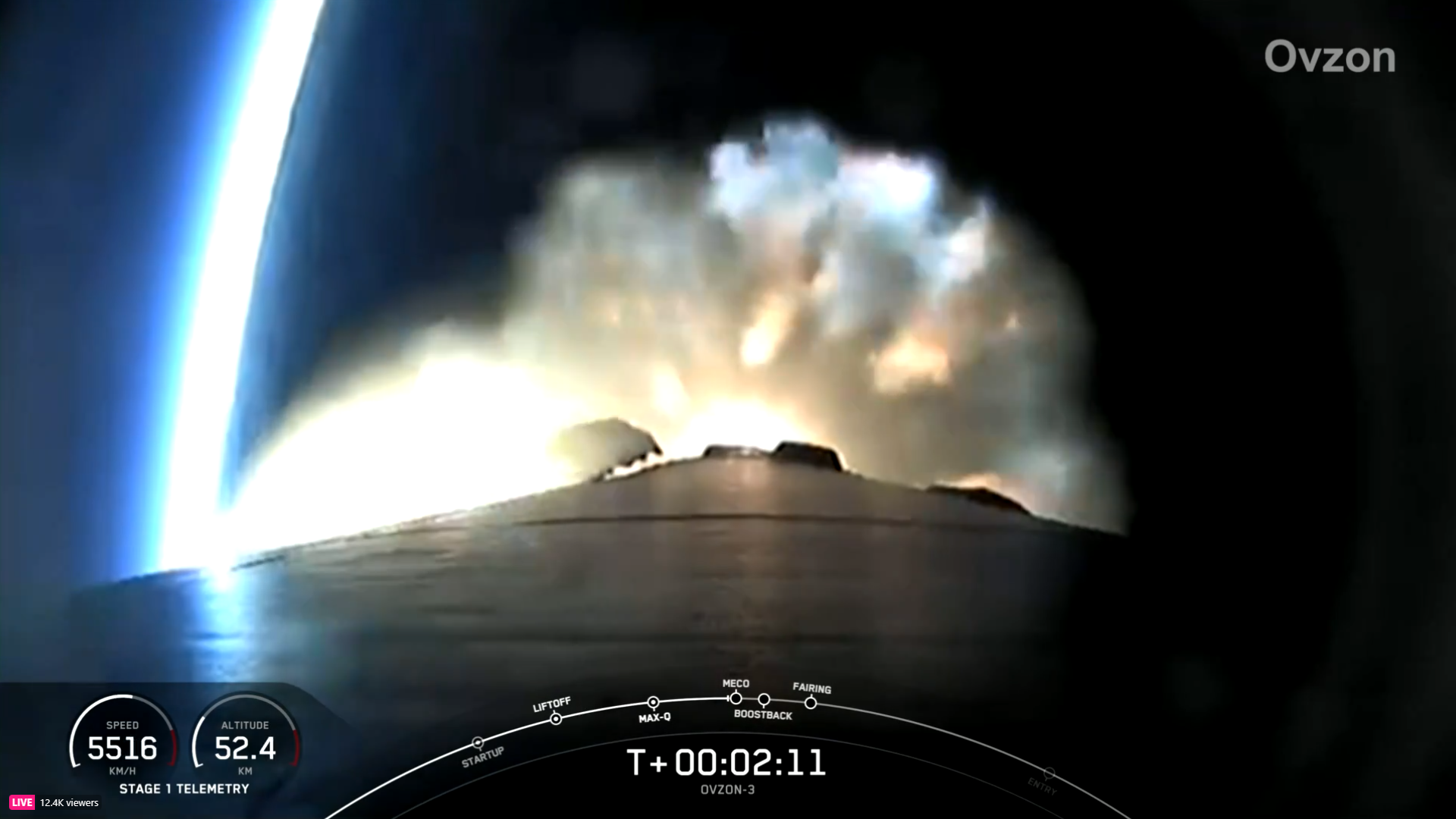
With B1076 gone, the single Merlin 1D+ Vacuum engine of the Falcon 9’s second stage ignited for a customary six-minute “burn”, followed by a shorter burn of less than 60 seconds, deeper into ascent. Ovzon-3 was deployed at 38 minutes into the flight, with an expectation that over the coming three to four months it will utilize its on-board electric propulsion assets to transition from GTO to Geosynchronous Earth Orbit (GEO) at an operational “slot” at 59.7 degrees West longitude.
When fully deployed, the satellite will measure some 89 feet (27 meters) across the width of its twin solar arrays. Ovzon-3 is expected to remain fully functional for up to 20 years of continuous operational service.






11 Comments
Leave a Reply11 Pings & Trackbacks
Pingback:SpaceX Launches Third Mission in 2024’s First Week, ULA Vulcan-Centaur to Fly Tonight - AmericaSpace
Pingback:SpaceX Launches Third Mission in 2024’s First Week, ULA Vulcan-Centaur to Fly Tonight - SPACERFIT
Pingback:SpaceX Flies 300th Falcon Mission, Looks Ahead to Ax-3 Space Station Launch - AmericaSpace
Pingback:SpaceX Flies 300th Falcon Mission, Looks Ahead to Ax-3 Space Station Launch - SPACERFIT
Pingback:SpaceX Flies Back-to-Back Falcon 9 Missions, Looks to Month-Ending Tenth Launch Tomorrow - AmericaSpace
Pingback:After Daylong Delay, NG-20 Cygnus Launches, Heads to Space Station - AmericaSpace
Pingback:After Daylong Delay, NG-20 Cygnus Launches, Heads to Space Station - SPACERFIT
Pingback:SpaceX Aims For Sixth, Seventh Launches of March, as Falcon 9, Starship Stand Ready - AmericaSpace
Pingback:SpaceX Launches, Lands Falcon 9, Wraps Up 25th Mission of Year - AmericaSpace
Pingback:SpaceX Targets Three Back-to-Back Falcon 9 Launches Tonight - AmericaSpace
Pingback:SpaceX Targets Three Back-to-Back Falcon 9 Launches Tonight - SPACERFIT